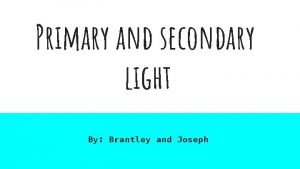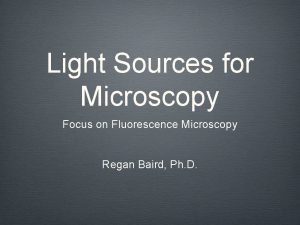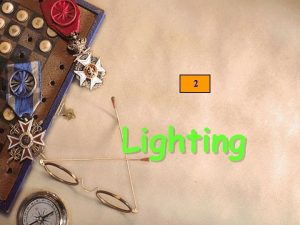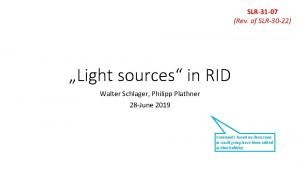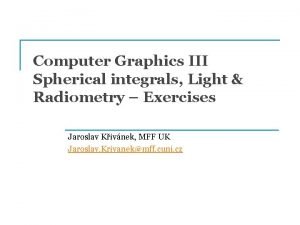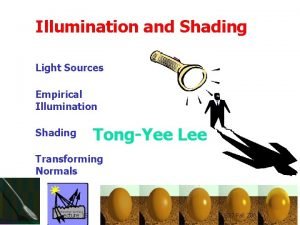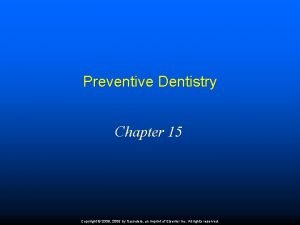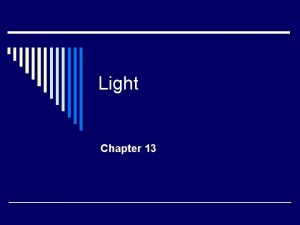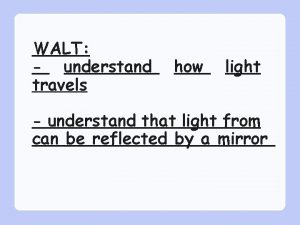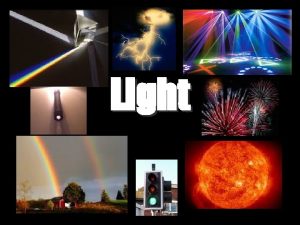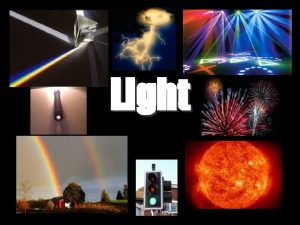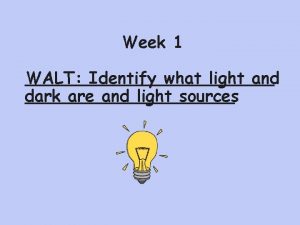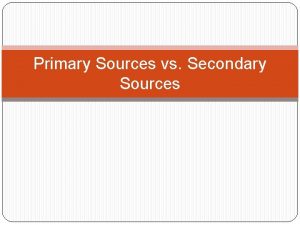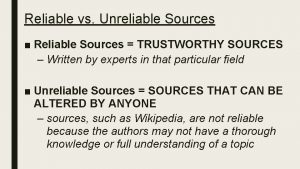Identify Light Sources Science Lesson 1 WALT Identify
















- Slides: 16

Identify Light Sources Science Lesson 1

WALT: Identify Light Sources

Where does light come from? Our major light source: the Sun

Where else does light come from?

Sorting light sources Natural vs. Man-made (artificial)

Are these light sources? moon water mirror These items are not light sources, instead they are reflecting light from other sources.

light source How does light travel? R Light rays travel in straight lines from the light source. R When it hits an opaque object, some light is absorbed and the rest reflects off. R If the object is transparent, light rays pass through it easily. R If the object is translucent, some light can pass through, but the rest of the light will be reflected.

How do we see? RLight coming from, (or reflecting off) objects enters the eye through the cornea then the pupil. RIt is focused clearly by the lens on to the retina. RThe light sensitive cells of the retina gather information about patterns of light and dark, colour and movement and send it through the optic nerve.

How do we see? RInformation entering the brain through the optic nerve, is then transmitted through more nerve pathways to the visual cortex. RHere the patterns of light and dark, colour and movement are interpreted. RThe brain, based on past experience, can then understand what it ‘sees’.

How do we see colour? light source R Light from most light sources looks white, but actually contains all the colours of the spectrum; also known as the rainbow. R If an object looks blue, it is absorbing every colour except blue, which is reflecting off it and entering your eyes. R If an object looks orange, it is absorbing every colour except orange, which, again, is reflecting off and entering your eyes. R If an object looks red. . . (You get the idea!)

on How does light reflect? off Angle of incidence Angle of reflection The ‘angle of reflection’ is always equal to the ‘angel of incidence’.

on off Light can only be reflected in straight lines.

How does light form shadows? light source R Light light source rays travel in straight lines, radiating out from the light source. R If rays are blocked by an opaque object a shadow forms where the light cannot reach. R If the light source is moved closer to the object, more light is blocked and a larger shadow is formed.

How does sunlight cause shadows? 2 pm The position of the Sun effects 3 pmthe position and length of the shadows created. 4 pm 7 pm . . . and travel across the sky until it sets in the West. 12 am 10 am Looking North, the Sun appears to rise in the 9 am East. . . 8 am 6 am Thanks to this natural phenomenon a sundial is able to tell us the time, as long as it is a sunny day!

Now explain to your partner: What is the Why between does an difference orange light from thelook Sun a different colour and light from the moon? to a banana? Why does the Sun rise How in does a the Eastperiscope and set in the work? West? Why can’t we see anything without a light source?

http: //www. bbc. co. uk/schools/scienceclips/ages/7_8/light_s hadows. shtml
 Light light light chapter 23
Light light light chapter 23 Light light light chapter 22
Light light light chapter 22 Chapter 22
Chapter 22 Print sources and web sources
Print sources and web sources Water management importance
Water management importance Whats your favorite subject
Whats your favorite subject Path length difference
Path length difference Primary and secondary source of light
Primary and secondary source of light Light sources for fluorescence microscopy
Light sources for fluorescence microscopy Primary sources of light examples
Primary sources of light examples Light sources found indoors
Light sources found indoors Light sources
Light sources Light sources
Light sources Illumination formula
Illumination formula Magdalena thomas
Magdalena thomas Chapter 15 preventive dentistry
Chapter 15 preventive dentistry Lbv foods examples
Lbv foods examples







